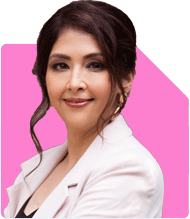Ramalingam Kalirajan |7453 Answers |Ask -Follow
Mutual Funds, Financial Planning Expert - Answered on May 23, 2024
He has an MBA in finance from the University of Madras and is a certified financial planner.
He is the director and chief financial planner at Holistic Investment, a Chennai-based firm that offers financial planning and wealth management advice.... more

I am 39 year old, I want plan early retirement. How do I do my investments? I know I m very late stilll please suggest.
Assessing Your Financial Goals and Timeline
Early Retirement Goals
Define what early retirement means for you. Consider the age at which you want to retire and the lifestyle you wish to maintain.
Timeline
At 39, you have a good number of years to plan and invest. Early retirement could be achievable with disciplined planning and investing.
Investment Strategy for Early Retirement
Mutual Funds
Equity Mutual Funds
Equity mutual funds are ideal for long-term growth. They can offer high returns, which are essential for building a substantial retirement corpus.
SIP (Systematic Investment Plan)
Investing through SIPs allows you to invest a fixed amount regularly. This helps in rupee cost averaging and building wealth over time.
Diversified Portfolio
Large-Cap Funds
Large-cap funds invest in well-established companies. They provide stability and moderate returns, forming a solid foundation for your portfolio.
Mid-Cap and Small-Cap Funds
Mid-cap and small-cap funds have higher growth potential but come with increased risk. Include them for higher returns but balance them with safer investments.
Balanced Advantage Funds
Balanced advantage funds adjust the allocation between equity and debt based on market conditions. They help manage risk while aiming for growth.
Fixed Income Investments
Public Provident Fund (PPF)
Long-Term Safety
PPF offers safety and decent returns. It has a lock-in period of 15 years, making it suitable for long-term goals like retirement.
Tax Benefits
Investments in PPF are eligible for tax deductions under Section 80C. The interest earned is also tax-free.
Debt Mutual Funds
Stability and Income
Debt mutual funds invest in fixed income securities. They provide stability and regular income, balancing the risk of your equity investments.
Types of Debt Funds
Consider different types of debt funds like liquid funds, short-term funds, and corporate bond funds for diversification.
Creating a Diversified Portfolio
Asset Allocation
A balanced mix of equity and debt investments can help manage risk and optimize returns. Consider allocating a higher percentage to equities for growth, and a smaller percentage to debt for stability.
Sample Allocation
Equity Mutual Funds (60%): For high growth potential
Debt Mutual Funds (20%): For stability and regular income
PPF (10%): For safety and tax benefits
Balanced Advantage Funds (10%): For dynamic asset allocation
Regular Monitoring and Rebalancing
Portfolio Review
Review your portfolio regularly to ensure it aligns with your financial goals and risk tolerance. Rebalance your investments as needed to maintain the desired asset allocation.
Retirement Corpus Calculation
Estimating Retirement Needs
Calculate the amount needed for your retirement based on your expected expenses, lifestyle, and inflation. Use retirement calculators to get an estimate.
Growth Projections
Assume a reasonable rate of return for your investments. A mix of equity and debt can help achieve a balanced growth rate.
Emergency Fund
Importance of Liquidity
Maintain an emergency fund equivalent to 6-12 months of expenses. This provides liquidity and financial stability during unforeseen events.
Tax Planning
Efficient Tax Strategies
Consider the tax implications of your investments. Utilize tax-saving options like PPF and ELSS (Equity-Linked Savings Scheme) to maximize tax benefits.
Professional Guidance
Certified Financial Planner (CFP)
Consult a Certified Financial Planner to tailor an investment strategy based on your specific needs. Professional advice can help optimize your portfolio for early retirement.
Conclusion
Early retirement is achievable with disciplined planning and investing. Balance your investments across equity funds, debt funds, PPF, and balanced advantage funds. Regularly review and adjust your portfolio to stay aligned with your financial goals and risk tolerance.
Best Regards,
K. Ramalingam, MBA, CFP,
Chief Financial Planner,
www.holisticinvestment.in
You may like to see similar questions and answers below
Hemant Bokil | Answer |Ask -Follow
Financial Planner - Answered on Feb 23, 2023
Ramalingam Kalirajan |7453 Answers |Ask -Follow
Mutual Funds, Financial Planning Expert - Answered on May 21, 2024
Ramalingam Kalirajan |7453 Answers |Ask -Follow
Mutual Funds, Financial Planning Expert - Answered on May 21, 2024
Ramalingam Kalirajan |7453 Answers |Ask -Follow
Mutual Funds, Financial Planning Expert - Answered on Jan 02, 2025
Dr Dipankar Dutta |734 Answers |Ask -Follow
Tech Careers and Skill Development Expert - Answered on Jan 06, 2025
Milind Vadjikar |839 Answers |Ask -Follow
Insurance, Stocks, MF, PF Expert - Answered on Jan 06, 2025
Nayagam P P |4033 Answers |Ask -Follow
Career Counsellor - Answered on Jan 06, 2025
Onkar Singh |26 Answers |Ask -Follow
Career Management, Skills Development Expert - Answered on Jan 06, 2025
Kanchan Rai |474 Answers |Ask -Follow
Relationships Expert, Mind Coach - Answered on Jan 06, 2025
Kanchan Rai |474 Answers |Ask -Follow
Relationships Expert, Mind Coach - Answered on Jan 06, 2025
Kanchan Rai |474 Answers |Ask -Follow
Relationships Expert, Mind Coach - Answered on Jan 06, 2025
Nayagam P P |4033 Answers |Ask -Follow
Career Counsellor - Answered on Jan 06, 2025
Mayank Chandel |1962 Answers |Ask -Follow
IIT-JEE, NEET-UG, SAT, CLAT, CA, CS Exam Expert - Answered on Jan 06, 2025
Nayagam P P |4033 Answers |Ask -Follow
Career Counsellor - Answered on Jan 06, 2025
























